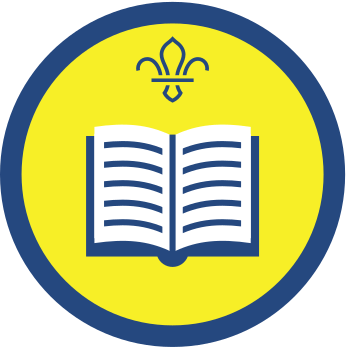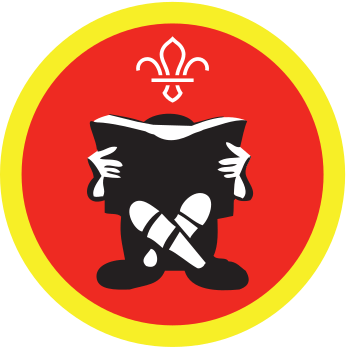Race to the Frozen North: the virtual book club
You’ll need
- Device with access to the internet
- Dice (optional)
Race to the Frozen North: The Matthew Henson Story
This well-researched book tells the story of an important black explorer, Matthew Henson, whose achievements have often been ignored because of the colour of his skin. Matthew Henson was the first American to reach the North Pole, and this is his life story. This book teaches young people about an important black explorer and is a great chance for them to see things from the perspective of someone who experiences racial prejudice.
Read the first chapterBefore you begin
- Use the safety checklist to help you plan and risk assess your activity. Additional help to carry out your risk assessment, including examples can be found here. Don’t forget to make sure all young people and adults involved in the activity know how to take part safely.
- This is a great activity to run during an online session. Check out the advice on using Zoom and other popular digital platforms and the guidance on being safe online.
- Everyone will need a copy of Race to the Frozen North: the Matthew Henson story by Catherine Johnson. You can find which libraries in your area stock this book, using the WorldCat search tool. This book is best suited to Cubs (or older Beavers wanting a more challenging read). It has a dyslexia-friendly layout, typeface and paperstock.
- Decide how you’ll show everyone the list of questions for Roll and recap and get the list ready – we’ve suggested some example questions, but you could add your own.
- To get everyone excited about the book club, you could share the video below of author Catherine Johnson reading an extract from the book.
- It’s up to the book club’s members to decide exactly how they run their club, so make sure everyone has their say. We’ve included suggestions to get you started, but feel free to adapt them so they work for you.
To watch in full screen, double click the video
Read together
- Everyone should read a chapter (or more, if they fancy) of their chosen story. Anyone who’s not reading aloud should mute themselves so it’s easy for everyone to hear.
People could take it in turns to read a paragraph or page or you could ask for a volunteer to read the entire chapter for the group.
- If people don’t understand what a word means (or have any other questions about what’s going on), they should type their question into the chat, click the blue hand icon to ‘raise their hand’ or use other nonverbal feedback.
- When there’s an appropriate time to pause (for example, at the end of a sentence or paragraph) everyone else should help explain the answers to the questions.
Roll and recap
- Everyone should get a dice or open a dice rolling website.
Make sure to check the surrounding content on the dice rolling website is appropriate before sharing with young people. This site is live and frequently updated, so it may vary from when this activity was published.
- The person leading the activity should show everyone the list of numbered questions.
It’s up to you whether you type them into the chat, share your screen, or hold a list up to your camera.
- Everyone should take it in turns to roll their dice and answer the question.
Example questions
- Describe one of the characters in three words.
- What was the most important thing that happened in the bit you just read?
- If you could ask any of the characters a question, who would you choose and what question would you ask them?
- Which character would you want to be friends with, and why?
- How did the part you just read make you feel?
- What do think will happen next?
Explore more
- The person leading the activity should remind everyone that Matthew Henson was the first person to reach the North Pole. Explorers like him need an array of skills to help them achieve their goals.
- Everyone should think about some of the skills that Matthew Henson used on his expedition – maybe they could think about practical survival skills or the ability to stick at it when things got tough. People should take it in turns to share their ideas.
- The person leading the activity should give everyone a quick virtual challenge so they can follow in Matthew’s footsteps and become an online adventurer.
Example challenges
- Build a den using only items in the room you’re in.
- Take a quick around the world trip with this National Geographic quiz.
- Spend five minutes packing a backpack (or any bag) with things an artic explorer might need. How many things can you find in the time?
- Learn to tie a classic knot.
- Create three different tracking signs using things in the room you’re in.
Reflection
Matthew Henson did something incredible: he was the first person to set foot on the North Pole. Explorers like Matthew usually go down in history – they get awards, books and films are made about them, and their names appear on university buildings, libraries and street signs. Can anyone think of any examples of this? Perhaps there’s a school nearby named after someone famous or they’ve seen a film about a historical figure who did something amazing.
Matthew’s immense achievement wasn’t acknowledged because of the colour of his skin. A white man was recognised discoverer of the pole and Matthew didn’t get the same media until 1946 – 35 years after his achievement. You can read more about how he was treated in this National Geographic article. How does this make people feel? Maybe they’re angry or disappointed. Why is it important to learn about people who’ve been left out of history?
Do people think it would be good to learn more about black people who did incredible things but weren’t talked about because of their race? Everyone could go away and find out more about someone and then (if they feel comfortable) share it with their friends. It’s up to them how they tell others about the person – they could write, draw, or make something or show everyone a book, photo, or video.
Safety
All activities must be safely managed. You must complete a thorough risk assessment and take appropriate steps to reduce risk. Use the safety checklist to help you plan and risk assess your activity. Always get approval for the activity, and have suitable supervision and an InTouch process.
- Online safety
Supervise young people when they’re online and give them advice about staying safe. Take a look at our online safety or bullying guidance. The NSPCC offers more advice and guidance, too. If you want to know more about specific social networks and games, Childnet has information and safety tips for apps. You can also report anything that’s worried you online to the Child Exploitation and Online Protection Command. As always, if you’ve got concerns about a young person’s welfare, including their online experiences, follow the Yellow Card to make a report.
Race to the Frozen North has a dyslexia-friendly layout, typeface and paperstock. You can find more tips for supporting young people with reading in this BBC Bitesize article from the National Reading Agency.
No one should feel pressured to read in front of everyone else – ask people to volunteer or get a leader to do the reading.
If you need to, choose a book that has an audiobook or large print edition available.
All Scout activities should be inclusive and accessible.

